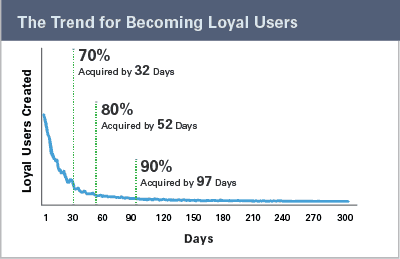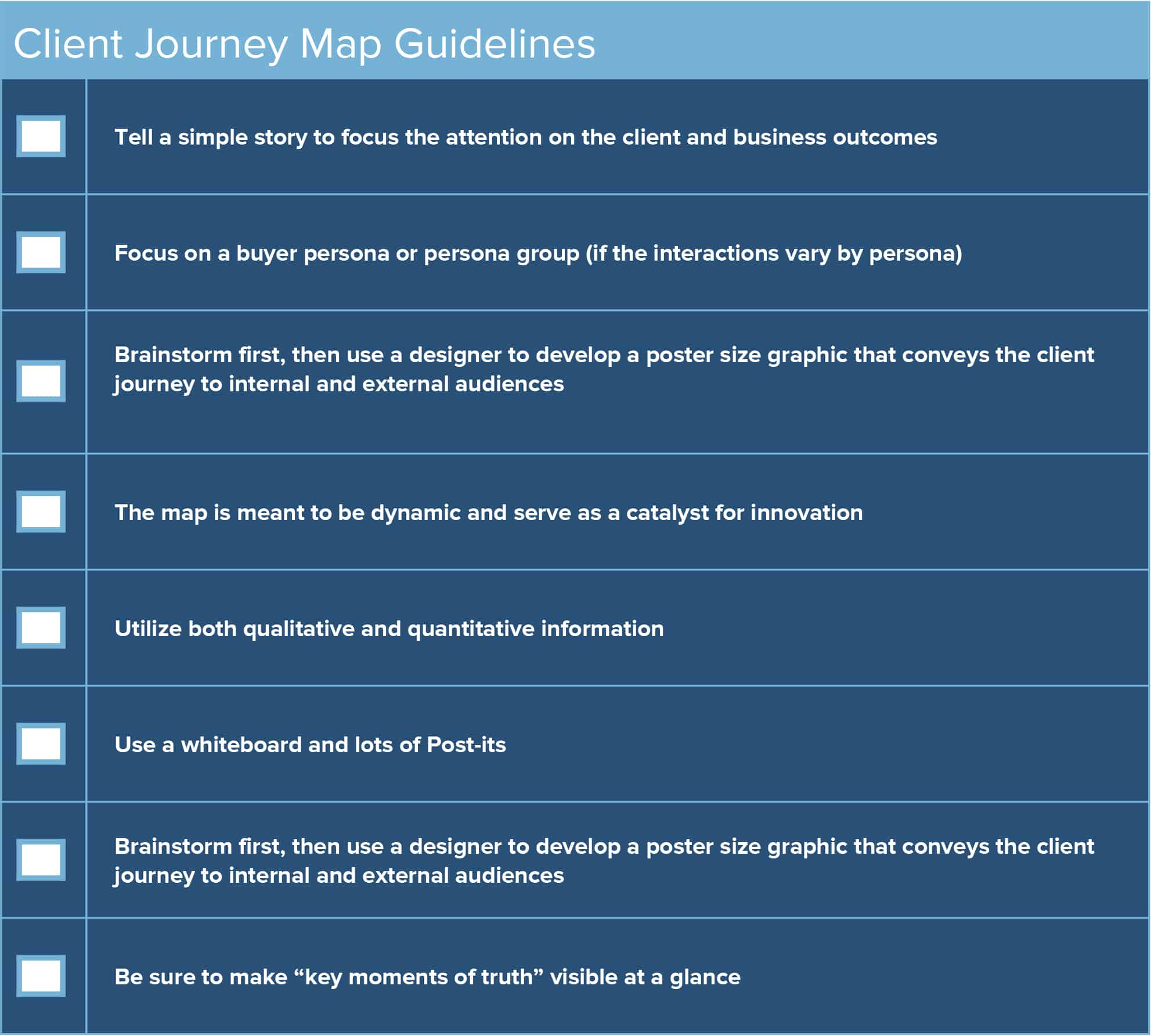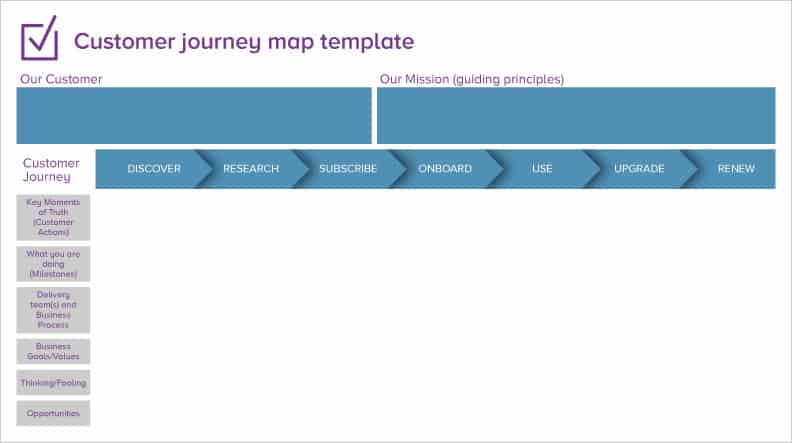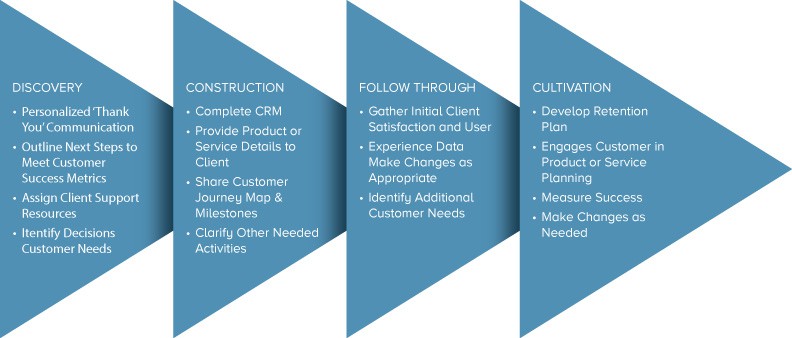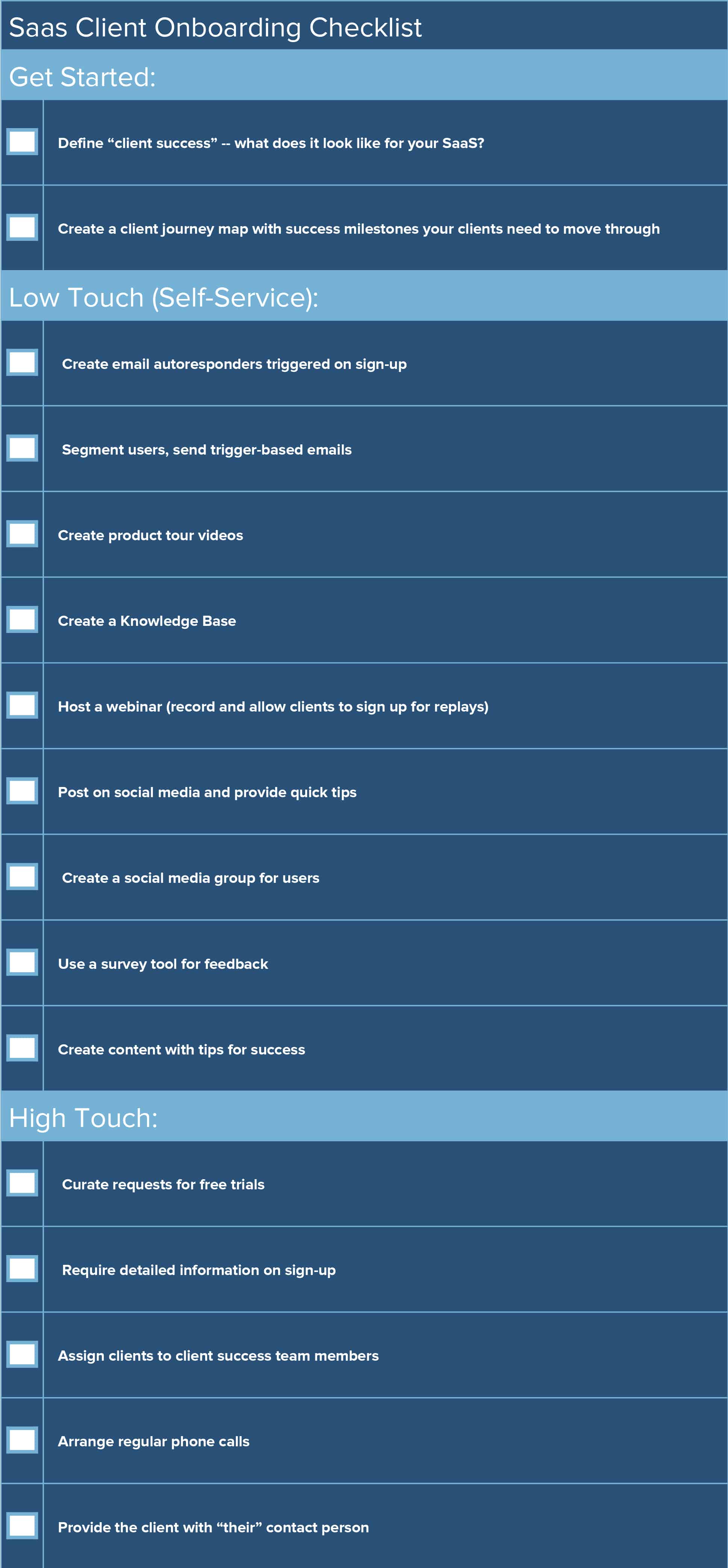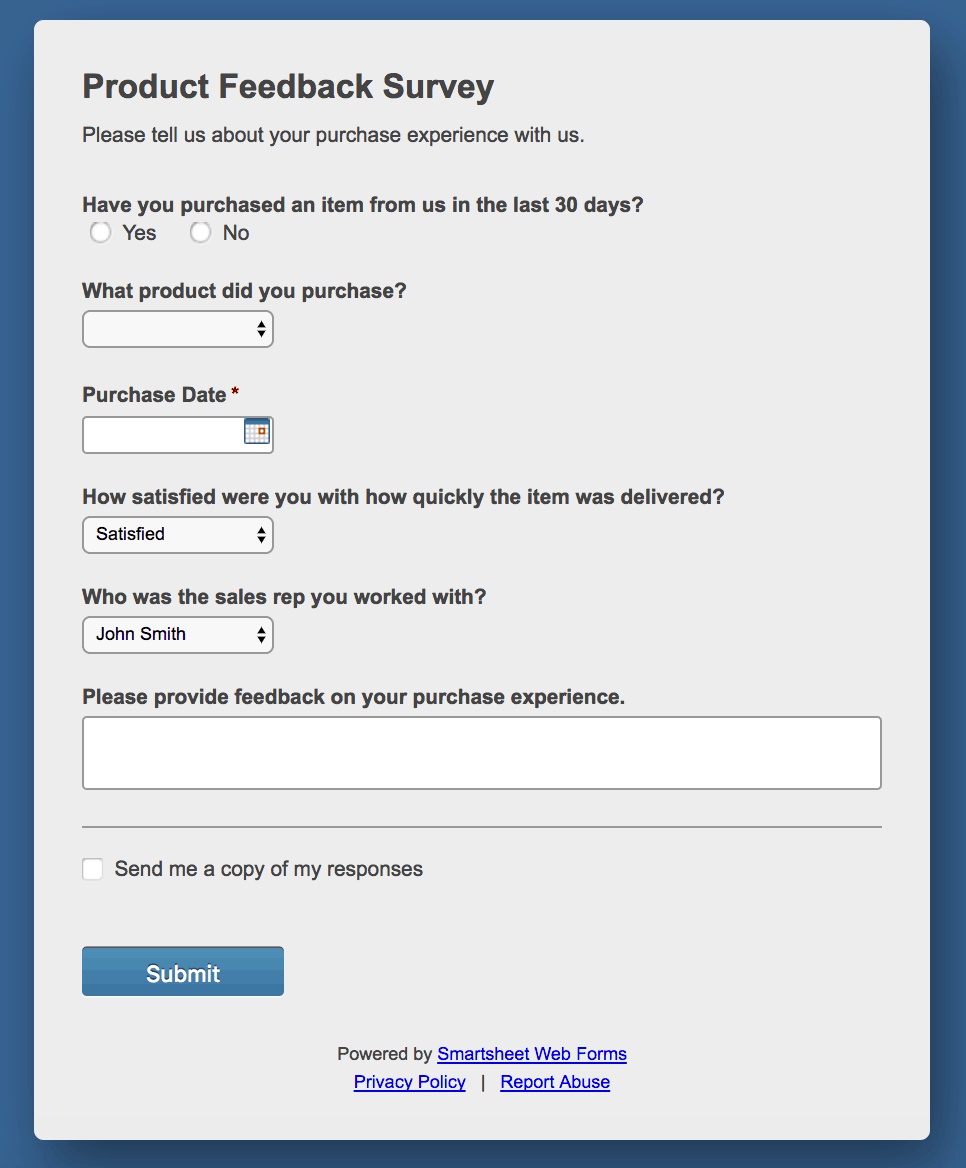What’s Client Onboarding?
Onboarding clients is the first step in their journey with your product or service. Simply stated, it’s the process you use to introduce new clients to your company. It’s akin to employee onboarding, which shares the goal of building long-lasting, mutually beneficial relationships.
It’s difficult to define a specific length of time for the client onboarding process because it depends on the type and complexity of business you run. However, you can learn what the timeframe should be by mapping the client journey for your products or services. The client journey covers all the touchpoints that take a client from awareness to engagement and purchase. Successful brands develop a seamless experience that interconnects each touchpoint and supports the overall journey.
Once you understand the road to clients’ success, you can design a consistent onboarding process that works for everyone involved. For many companies, particularly those in SaaS, onboarding begins before the first sale.
- Outline the actions required for your client to achieve business outcomes.
- Map client onboarding milestones.
- Share your client journey map and milestones.
- Become data-driven to monitor key milestones.
- Proactively manage exceptions.
These are the broad strokes, and every product or service company needs to fill in the incremental, specific steps relevant to their clients and business to create a clearly delineated, repeatable process.
Why Client Onboarding Is Crucial
Does every company need to have a formal client onboarding process? Outstanding first impressions pave the way for long-term business relationships. When we asked Craft why client onboarding was so important, he stressed, “Your clients are the key to profitability and faster revenue growth, and nurturing long-term customer relationships is critical to the success of your business. With the prevalence of subscription models and client data, it’s critical that you monitor and manage how your client engages with you from the start—beginning with when they first research your company and during any type of trial of your solutions.”
The #1 Reason for Client Onboarding: Retention
New leads and closing deals are exciting, and since many companies use lead conversion as a key performance metric, acquisition can become a disproportionate measure of success. Adding new clients to the roster is a worthy pursuit, but retention should be given due consideration as a fundamental factor in overall profitability. Bain & Company research showed that 5 percent increases in client retention can boost profits from 25 percent to a whopping 95 percent.
Client retention is measured by churn rate, or the amount of subscribers who discontinue service after a certain period of time. Churn rate is industry and product dependent and measured by month, quarter, or year. The norm is an annual rate, but companies that price on a monthly basis like gyms, mobile phone service providers, and SaaS tend to review churn rate by the month. Some other firms look at how many clients stay, or retention rate. Whether you count your losses or wins doesn’t matter - at the end of the day they add up to the same thing - because you need to do everything you can to prevent churn.
Effective Client Onboarding Prevents Churn and Breeds Loyalty
Thoughtful onboarding keeps clients with you because you are an empathetic partner in how they define their own success. Let clients know you’re in their corner by:
- Placing your client KPIs and metrics in the forefront: When clients see you as a valuable partner in what they want to achieve, they are less likely to leave.
- Building relationships: Whether you have face-to-face or virtual interactions with your clients, it’s important to take time for a discovery process that ensures you and your clients are on the same page.
- Keeping the communication going: Once your client relationship is ongoing, keep the interaction alive through regular (but not irritating) communication, data collection, and making improvements to your client service based on the information you gather.
Source: ServiceSource
Craft told us that ServiceSource has found in its research that “... if an individual user doesn’t become loyal within 90 days of provisioning, there’s typically only a 10 percent chance that they ever will.” According to the company, “The definition of a loyal customer is an individual who uses a product or service often enough that it becomes integral to achieving business outcomes.”
Touching base and leaving no stone unturned (in the way you present the benefits of your product or service) early on helps ensure the relationship will last.
Anatomy of a Successful Client Onboarding Process
In a research report on customer service impact, Oracle found that 86 percent of buyers will pay more for a good customer experience. That, in itself, is a compelling reason to improve your client onboarding process.
Many recent marketing conversations have revolved around the business imperative of “delighting clients” with fun user experiences, personalization, unique brand and more. Those are important. However, in a study covered by the Harvard Business Review, the single most effective client service to build loyalty and retention is simply “making it easy.” The study found that making “easy” your mantra ultimately decreases client churn.
Three steps to creating an easier client experience are:
- Remove obstacles: Review your process and eliminate anything that stands in the way of customer understanding or use of your product or service, particularly if your main interaction with them is online.
- Learn to listen: Hear what your customers have to say, but also brainstorm with your own team members about their interests. Be sure to check out what competitors are doing, and pay attention to social media conversations.
- Use feedback to improve the client experience: Check in with clients by phone or email, and make surveys an integral part of your process. Time feedback sessions to key milestones in your client’s journey.
Good Client Onboarding Requires Context
There’s no single model for client onboarding, because to be effective the process needs to take the client’s goals into account - as well as what your organization has to offer to specifically meet those needs. As Craft noted, one of the most important aspects of delivering excellent service is to understand and create a map of their experience.
Here are some simple guidelines Craft and ServiceSource suggest, and a client journey map template to help you begin your own journey to improved client onboarding:
Source: ServiceSource
Source: ServiceSource
McKinsey Research, reported in the Harvard Business Journal, shows that navigating the client journey pays off and that “performance on journeys is more predictive of business outcomes than performance on touchpoints is. Indeed, across industries performance on journeys is 30% to 40% more strongly correlated with customer satisfaction than performance on touchpoints is—and 20% to 30% more strongly correlated with business outcomes, such as high revenue, repeat purchase, low customer churn, and positive word of mouth.”
Once you’ve identified the client journey, you can apply it to an onboarding process that works for you and your customers. To get you started, here’s a sample chart.
Client Onboarding Process Flow Chart
When brands deliver the experiences consumers want, consumers reciprocate with ongoing, fruitful relationships. Once you’ve identified the client journey for your type(s) of client, it’s important to put systems and process in place to guarantee consistency for you, your team, and your client.
Client Onboarding Checklists and Tips for Professional Services, Wealth Management, and SaaS
Here are some sample checklists you can use to enrich your own onboarding client process, geared toward three types of businesses:
Professional Services & Consultancies Tips and Onboarding Checklist
Effective onboarding is all about setting expectations in marketing/advertising and other types of consultancies and making sure your communication is clear - and two-way. Make sure your client is being heard and that you’ve shared all the necessary information.
Onboarding for professional services is all about relationships: extremely high touch. It requires work upfront to make the sale, and make your interactions more meaningful to the client. Here are some tips:
- Do your research: Know your client. Take the time to delve into your client’s history. If they’ve had previous relationships with professional services, What work was done?, and more importantly, Why did the relationship end? Be sure you understand their history and research competitors.
- Educate your team: Never meet (virtually or in-person) with a new client before briefing team members and identifying team member roles, responsibilities, and the client’s goals and objectives. The initial startup meeting with the client can make or break the relationship.
- Stay organized and keep the information flowing: Use cloud-based tools to keep everyone in the loop about client contact and background information, track client inputs, deliverables, milestones, and review cycles.
Wealth Management Client Onboarding Tips and Checklist
In wealth management, client onboarding has been considered a labor intensive necessity. Many financial advisors and insurance agents focus on regulatory requirements, and lose valuable opportunities to get to know their clients better. Turning that around with a solid, friendly onboarding process will set the tone for a long and mutually beneficial future.
Dive into data: Develop rich client profiles that offer a comprehensive picture of past and present finances. It can be used to show clients what others in similar situations have done to protect and increase their wealth and create tailored solutions to address them.
Take advantage of technologies: Use digital/mobile technologies to make the process accessible, transparent, and responsive.
“Reboard” periodically: A regular review of each client relationship can be used to identify opportunities for greater understanding, enhanced wealth creation, and the potential for increased value generation. Regulatory frameworks call for client folder review for Retail or Professional classification as well as periodic monitoring of key areas like risk profile, investment strategy, and asset allocation.
SaaS Client Onboarding Tips and Checklist
Selling cloud-based software isn’t enough to achieve long-term success, especially if they accept a free trial before they buy. Here are a few tips to consider in your onboarding process:
- Educate your clients: First, explain all of the software features in detail, and provide useful tips to improve their user experience. Next, use case studies to show how your software works in “real-life” scenarios. Educate your clients to make their user experience smoother. Share any new, relevant articles you publish and invite them to informational/educational webinars and discuss their issues.
- 30 days may not be the magic number: If your clients started to use your service and are still in the free trial period, don’t wait for the full 30 day trial period to expire to convert your customers. New clients are more open to discussions and learning all your service offering - the features, tricks, and tips they can use to reach their goals faster. Set up a good communication strategy, and you will increase your chances to convert.
- Follow up with the converted - and unconverted: It’s normal to face problems or difficulties when clients start using a new process or service. Follow up with your clients frequently to uncover issues so you can address them in your refining process and to maintain good customer service. For those who don’t convert, you need to know why. You can call, email, or send a survey (or all three) to get the information.
Creating Your Own Best Practices for Client Onboarding
Every new or leaving client provides you with an opportunity to learn and improve. Collecting and focusing on client data means you have a platform to improve your process. This will not only help you continuously improve and innovate, but generate a happy byproduct of client satisfaction and and an opportunity to differentiate yourself from competitors.
Being a company that has a reputation for caring and listening to its clients will take you far. When you have good relationships, client retention will increase. In situations when something goes wrong, fulfilled clients are more likely take the time to find a solution instead of jumping ship and going with another provider. Issues will arise in any industry and even in the best of situations, caring and listening to your clients’ concerns is critically important.
Feedback Tools
Your clients are the ones who use your service or app regularly, so take advantage of any ideas they have for fine-tuning your product and client service. Discuss their ideas and suggestions in detail. If your client suggests a service or feature that can’t be created, take the time to connect, explain why, and suggest alternatives. This will build trust between you and your clients, prolong their lifetime value, and prove that you are a caring and responsible partner.
One way to get feedback from clients is through a web form. With Smartsheet you can create your own and have the answers routed to the appropriate people within your organization.
Check out Smartsheet Web Forms.
During the entire process it’s imperative to be flexible. Don’t hesitate to customize your client onboarding process based on what you learn and ever-changing business and technology conditions. Collecting and acting on client-provided data will move your relationships and business forward, faster.
Drive ROI with Effective Client Onboarding in Smartsheet
Empower your people to go above and beyond with a flexible platform designed to match the needs of your team — and adapt as those needs change.
The Smartsheet platform makes it easy to plan, capture, manage, and report on work from anywhere, helping your team be more effective and get more done. Report on key metrics and get real-time visibility into work as it happens with roll-up reports, dashboards, and automated workflows built to keep your team connected and informed.
When teams have clarity into the work getting done, there’s no telling how much more they can accomplish in the same amount of time. Try Smartsheet for free, today.

